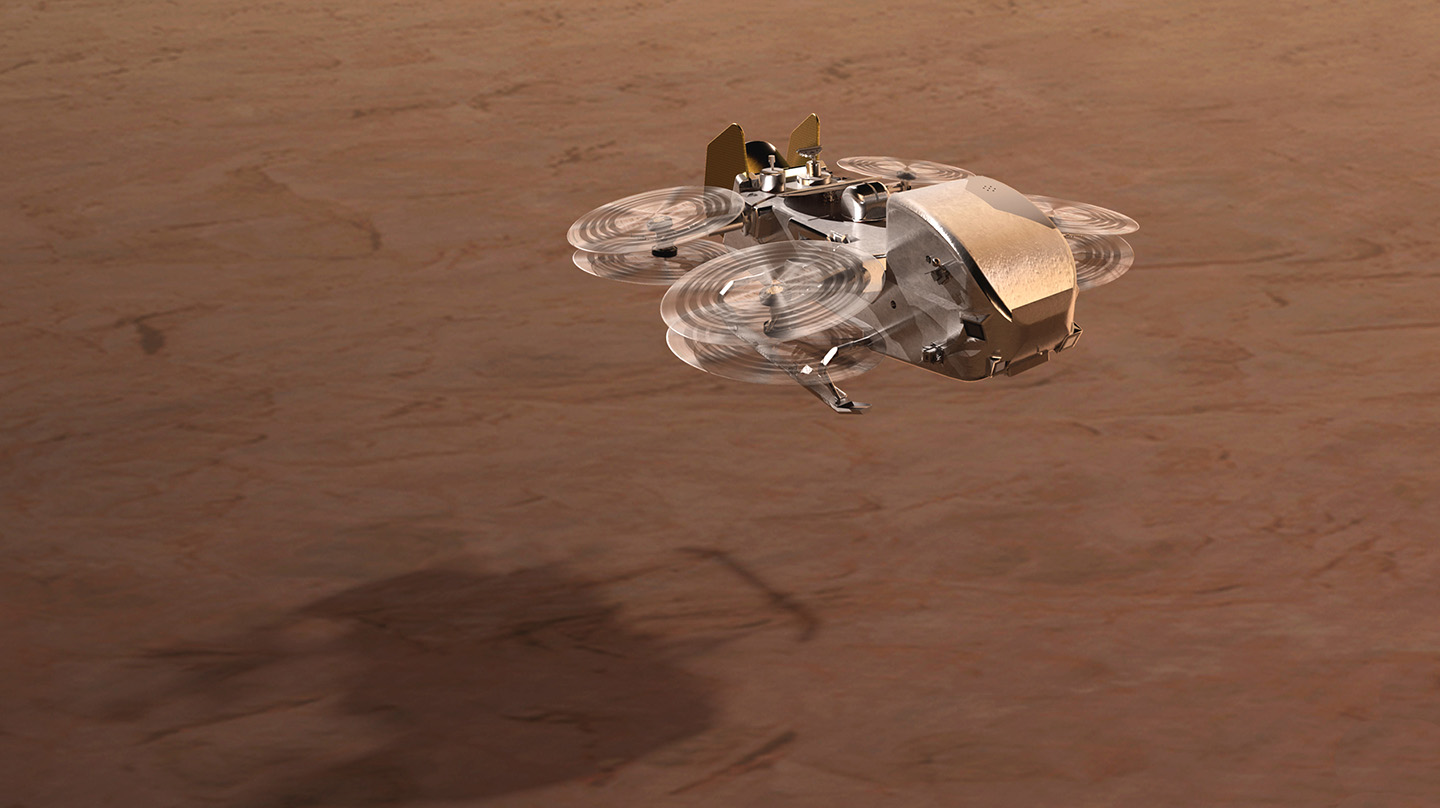News
Dragonfly Mission Passes Critical Design Review
NASA’s Dragonfly, the first rotorcraft designed for scientific exploration on another ocean world, has passed its Critical Design Review. Led by the Johns Hopkins Applied Physics Laboratory (APL) in Laurel, Maryland, the mission to Saturn’s icy moon Titan will investigate prebiotic chemical processes and complex organic compounds that, on Earth, are the building blocks of life.
Passing this milestone means that Dragonfly’s design is mature and can enter full-scale fabrication, integration and test, and the team can turn its attention to the construction of the spacecraft.
“I’m so proud of what this team has accomplished in bringing this audacious mission to reality,” said Dragonfly Principal Investigator Elizabeth “Zibi” Turtle, of APL. “After years of design and testing, we are excited to start building Dragonfly itself and prepare for its game-changing voyage of exploration across an intriguing, mysterious ocean world.”
The Dragonfly mission will launch in 2028 on a SpaceX Falcon Heavy rocket from Launch Complex 39A at NASA’s Kennedy Space Center in Florida.
After a 6 ½-year journey to Titan, the nuclear-powered, car-sized drone will spend more than three years exploring this alien world. Essentially a flying chemistry lab, along with cameras and other science instrumentation, Dragonfly will travel between dozens of landing sites on Titan’s surface to investigate the chemical origins of life — achieving critical planetary science and astrobiology objectives while advancing aeronautics and space technology.
“We’re motivated by the confidence NASA has shown in APL and our partners to execute this bold and innovative mission,” said Andrew Driesman, APL’s mission area executive for Civil Space Flight. “Through collaboration with NASA, industry and academia, the Dragonfly team is drawing on a deep well of scientific and engineering expertise to explore another solar system body in a manner unlike anything humanity has done before.”
Dragonfly is being designed and built under the direction of APL, which manages the mission for NASA. The team includes key partners at NASA’s Goddard Space Flight Center in Greenbelt, Maryland; Lockheed Martin Space in Littleton, Colorado; Sikorsky in Stratford, Connecticut; NASA’s Ames Research Center in Silicon Valley, California; NASA’s Langley Research Center in Hampton, Virginia; Penn State University in State College, Pennsylvania; Embry Riddle in Daytona Beach, Florida; Malin Space Science Systems in San Diego; Honeybee Robotics in Pasadena, California; NASA’s Jet Propulsion Laboratory in Southern California; U.S. Department of Energy; the French space agency (CNES) in Paris; the German Aerospace Center (DLR) in Cologne, Germany; Lawrence Livermore National Laboratory in Livermore, California; and the Japan Aerospace Exploration Agency (JAXA) in Tokyo.

